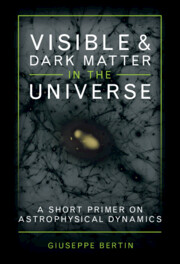Book contents
- Frontmatter
- Dedication
- Contents
- Preface
- Acknowledgements
- Part I Visible Matter
- 1 Light
- 2 Optical Astronomy
- 3 Radio Astronomy
- 4 X-Ray and Gamma Ray Astronomy
- 5 Astroparticle Physics, Gravitational Waves, and Space Physics
- Part II Dark Matter
- 6 Galaxies
- 7 The Supermassive Black Hole at the Center of the Milky Way
- 8 Two Precursors of the Problem of Dark Matter
- 9 The Discovery of Dark Halos around Spiral Galaxies
- 10 The Cosmological Context
- Index
9 - The Discovery of Dark Halos around Spiral Galaxies
Published online by Cambridge University Press: 08 December 2022
- Frontmatter
- Dedication
- Contents
- Preface
- Acknowledgements
- Part I Visible Matter
- 1 Light
- 2 Optical Astronomy
- 3 Radio Astronomy
- 4 X-Ray and Gamma Ray Astronomy
- 5 Astroparticle Physics, Gravitational Waves, and Space Physics
- Part II Dark Matter
- 6 Galaxies
- 7 The Supermassive Black Hole at the Center of the Milky Way
- 8 Two Precursors of the Problem of Dark Matter
- 9 The Discovery of Dark Halos around Spiral Galaxies
- 10 The Cosmological Context
- Index
Summary
In regular, normal spiral galaxies the overall kinematics of the disk can be described in terms of a mean axisymmetric rotation around the center, following a fluid model presented earlier in the book. Making reliable measurements of galaxy rotation curves is an art that requires great expertise. This chapter explains how the study of the rotation curves of spiral galaxies led to the discovery of dark matter halos: decisive evidence was eventually obtained in the mid-1980s, by referring to radially extended radio rotation curves. The decomposition of a rotation curve in the relative contributions of dark and visible matter to the total gravitational field is a step that still remains largely ambiguous. In a conservative approach, the role of dark matter is often thought to be minimal and to become dominant only in the outer parts of the galaxy, but there remain several unexplained aspects and unresolved questions. Touching upon a nontrivial dynamical issue, the problem of making self-consistent decompositions is briefly addressed. Finally, two dynamical arguments are examined that go beyond the direct inspection of the properties that characterize the observed basic state of spiral galaxies and call for the presence of a dark halo as a solution to otherwise unexplained stability properties of galaxy disks.
Keywords
- Type
- Chapter
- Information
- Visible and Dark Matter in the UniverseA Short Primer on Astrophysical Dynamics, pp. 132 - 150Publisher: Cambridge University PressPrint publication year: 2022

